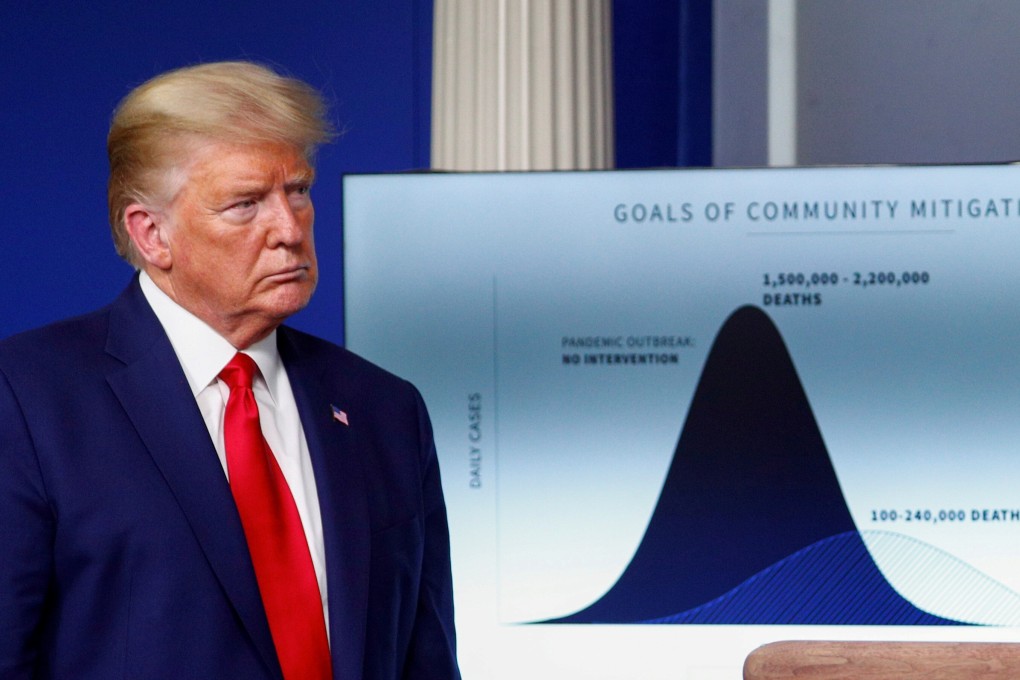‘Toughest decision’ looms for Trump as US logs world’s top coronavirus death toll
- United States has seen its highest death tolls to date, with roughly 2,000 deaths a day reported for the last four days
- US President Donald Trump has been mulling when to reopen the parts of the country as economy suffers

Chicago and other cities across the US Midwest braced for a potential surge in Covid-19 victims after the death toll in United States eclipsed Italy’s to become the highest in the world.
A running tally from the US-based Johns Hopkins University showed that the number of deaths surged to over 20,608 in the US on Sunday, while nearly 19,500 people had lost their lives in Italy, which previously bore the grim record for the highest death toll during the global coronavirus pandemic.
Nonetheless, US President Donald Trump has said he wants life in the United States to return to normal as soon as possible, and that he would use “facts and instincts” to make a decision on whether to recommend opening up areas of the country for working life to resume.
“I think it’s going to be the toughest decision I ever made and hopefully the most difficult I will ever have to make,” Trump told Fox News on Saturday evening.
“I hope I’m going to make the right decision. I will be basing it on a lot of very smart people, a lot of professionals, doctors and business leaders. There are a lot of things that go into a decision like that. And it’s going to be based on a lot of facts and instincts.”
In the US – which has by far the highest number of confirmed coronavirus cases globally, with almost 530,000 infections – New York remains the hardest hit, with more cases in the state than in any country in the world. But fear mounted over the spread of the scourge into the nation’s heartland.